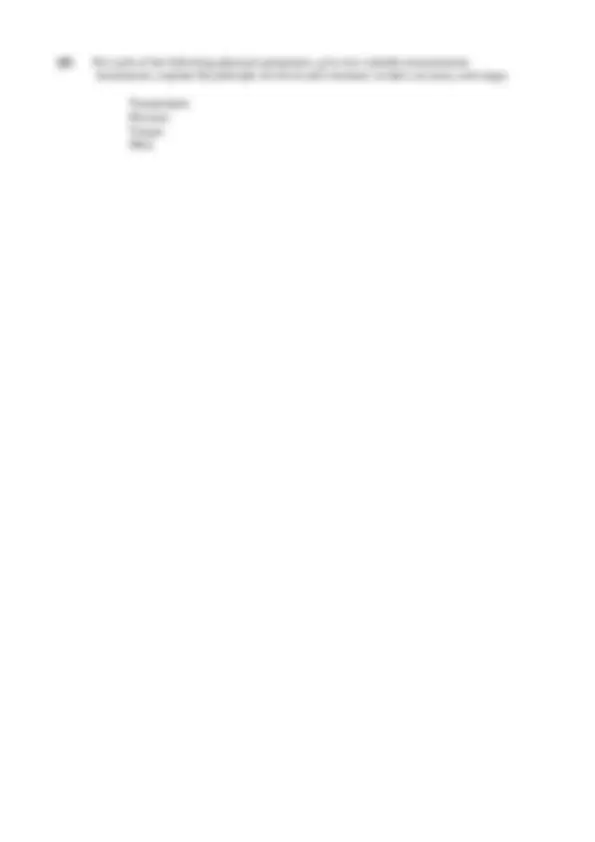



Study with the several resources on Docsity

Earn points by helping other students or get them with a premium plan


Prepare for your exams
Study with the several resources on Docsity

Earn points to download
Earn points by helping other students or get them with a premium plan
Community
Ask the community for help and clear up your study doubts
Discover the best universities in your country according to Docsity users
Free resources
Download our free guides on studying techniques, anxiety management strategies, and thesis advice from Docsity tutors
Information about an exam for the higher diploma in quality assurance, specifically for the 2nd year industrial engineering students focusing on measurement & calibration. Exam codes, modules, instructions, and requirements for three questions. Topics covered include calibration requirements, types of errors in measuring instruments, and definitions of measuring instrument terms.
Typology: Exams
1 / 3

This page cannot be seen from the preview
Don't miss anything!


2 nd^ Year Industrial Engineering
Module Code(s) IE884 & IE Module(s) Measurement & Calibration
Paper No. 1 Repeat Paper
External Examiner(s) Prof. J. Antony Internal Examiner(s) Dr. D. O’Sullivan Mr. J. Cunningham
questions carry equal marks. For Questions with a) & b) parts, part b) carries 60% of the marks for that question
Duration (^) 2 hours
No. of Pages 3 Department(s) Industrial Engineering Course Co-ordinator(s) Dr Pat Donnellan
Requirements :
Q1 a) Below are listed some of the main requirements contained in the Calibration section
of ISO9001-2000. Explain and discuss each heading within the context of an industrial calibration system.
a.1 Periodic Review(of the System) a.2 Documentation Control
a.3 Calibration Labelling a.4 Intervals of Calibration
a.5 Traceability a.6 Hierarchy of Standards
b) Outline the main features of a Calibration System and indicate the kinds of issues you may need to address when implementing a calibration system in a Medical Appliance company of 500 people.
Q2. a) Discuss the different types of errors that are encountered in measuring instruments
and give examples using diagrams, of the methods that are used to counteract the influence of such errors.
b) Outline the relative merits of Analogue and Digital measuring instruments.
Q3. Explain using examples, the following terms in the context of measuring instruments;
Accuracy Precision Repeatability Linearity Bias Systematic Error
Q4. Explain, using diagrams where appropriate, any three (3) of the following;
a) The ISO System of Limits and Fits
b) The principles and main uses of Air Gauging
c) The main methods of taking Strain measurements
d) ‘GO’ and ‘NOT GO’ Limit Gauges
e) The Principles of Operation and the uses of a Sine Block